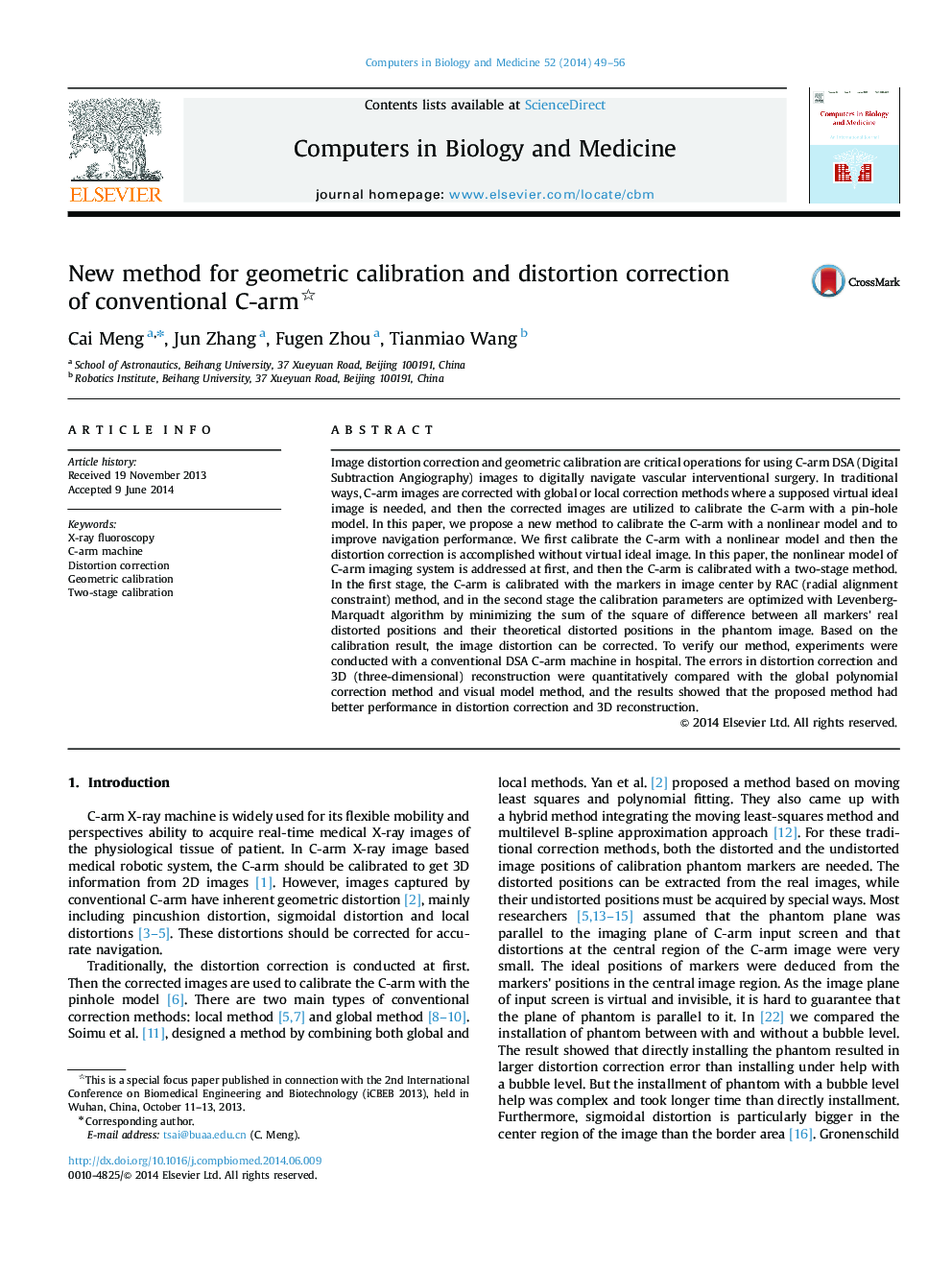| Article ID | Journal | Published Year | Pages | File Type |
|---|---|---|---|---|
| 6921546 | Computers in Biology and Medicine | 2014 | 8 Pages |
Abstract
Image distortion correction and geometric calibration are critical operations for using C-arm DSA (Digital Subtraction Angiography) images to digitally navigate vascular interventional surgery. In traditional ways, C-arm images are corrected with global or local correction methods where a supposed virtual ideal image is needed, and then the corrected images are utilized to calibrate the C-arm with a pin-hole model. In this paper, we propose a new method to calibrate the C-arm with a nonlinear model and to improve navigation performance. We first calibrate the C-arm with a nonlinear model and then the distortion correction is accomplished without virtual ideal image. In this paper, the nonlinear model of C-arm imaging system is addressed at first, and then the C-arm is calibrated with a two-stage method. In the first stage, the C-arm is calibrated with the markers in image center by RAC (radial alignment constraint) method, and in the second stage the calibration parameters are optimized with Levenberg-Marquadt algorithm by minimizing the sum of the square of difference between all markers׳ real distorted positions and their theoretical distorted positions in the phantom image. Based on the calibration result, the image distortion can be corrected. To verify our method, experiments were conducted with a conventional DSA C-arm machine in hospital. The errors in distortion correction and 3D (three-dimensional) reconstruction were quantitatively compared with the global polynomial correction method and visual model method, and the results showed that the proposed method had better performance in distortion correction and 3D reconstruction.
Related Topics
Physical Sciences and Engineering
Computer Science
Computer Science Applications
Authors
Cai Meng, Jun Zhang, Fugen Zhou, Tianmiao Wang,
